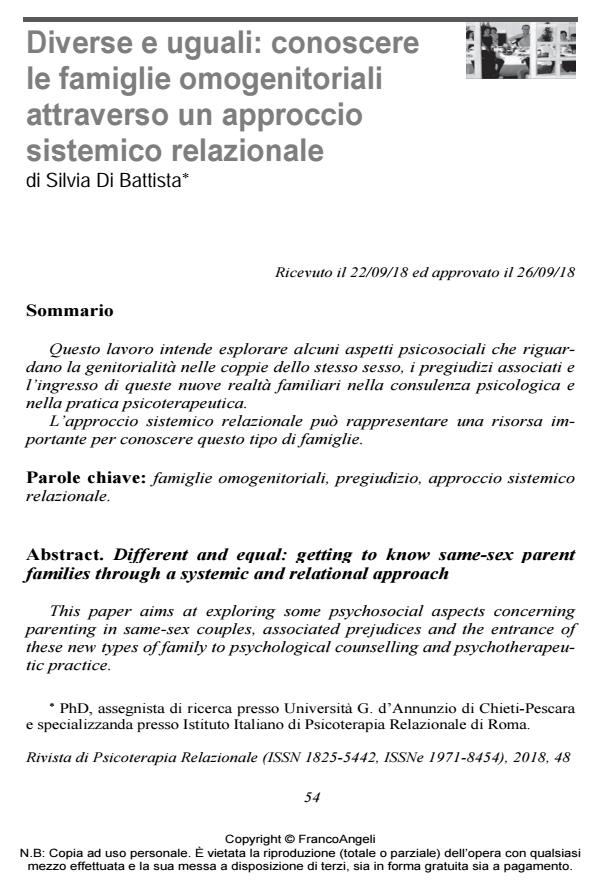Different and equal: getting to know same-sex parent families through a systemic and relational approach
Journal title RIVISTA DI PSICOTERAPIA RELAZIONALE
Author/s Silvia Di Battista
Publishing Year 2019 Issue 2018/48
Language Italian Pages 21 P. 54-74 File size 346 KB
DOI 10.3280/PR2018-048002
DOI is like a bar code for intellectual property: to have more infomation
click here
Below, you can see the article first page
If you want to buy this article in PDF format, you can do it, following the instructions to buy download credits

FrancoAngeli is member of Publishers International Linking Association, Inc (PILA), a not-for-profit association which run the CrossRef service enabling links to and from online scholarly content.
This paper aims at exploring some psychosocial aspects concerning parenting in same-sex couples, associated prejudices and the entrance of these new types of family to psychological counselling and psychotherapeutic practice. The relational systemic approach can represent an important resource to get to know this type of family.
Keywords: Same-sex parents, prejudice, systemic and relational ap-proach.
- IO, TU e i NOSTRI figli: uno sguardo alla famiglia omogenitoriale Ludovica Pagano, in RIVISTA DI PSICOTERAPIA RELAZIONALE 53/2021 pp.75
DOI: 10.3280/PR2021-053005
Silvia Di Battista, Diverse e uguali: conoscere le famiglie omogenitoriali attraverso un approccio sistemico relazionale in "RIVISTA DI PSICOTERAPIA RELAZIONALE " 48/2018, pp 54-74, DOI: 10.3280/PR2018-048002